-
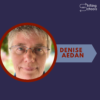 play_arrow
play_arrow
How Would You Like It To Be? – A School Wide Project-Based Learning Film Festival Jeff Utecht
-
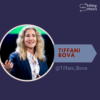 play_arrow
play_arrow
Episode 220: Master Asker of Questions Jeff Utecht
-
 play_arrow
play_arrow
Episode 219: The Values Map Jeff Utecht
-
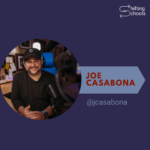 play_arrow
play_arrow
Episode 218: 3 Podcasting Tips for Teachers and Students Jeff Utecht
-
 play_arrow
play_arrow
Episode 217: More than a Logo Jeff Utecht
-
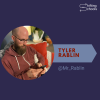 play_arrow
play_arrow
Episode 216: Should Cell Phones be Allowed in Class? Jeff Utecht
-
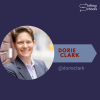 play_arrow
play_arrow
Episode 215: Your Network Starts with You Jeff Utecht

Show Notes
|Introductions|
Jeff and David shared their goals for doing the SOS: Shifting Our Schools podcast. The overall theme is to help individuals and schools make the shift in how they teach to expand their learning communities beyond the walls of their classrooms and schools. As international educators located in Asia and connected through the East Asia Regional Council of International Schools (EARCOS), Jeff and David designed the show for an international audience.
Most folks connected to educational technology and the blogosphere know who Jeff is. So who is this David fella? David has been working as an instructional technologist, social studies teacher and counselor in international schools for the past 15 years. His most recent EARCOS school was Hong Kong International School where he taught in the Upper Primary school. He is now teaching at the very “shifted” Hsinchu International School. David’s focus as an educator is to work as a learning partner with teachers in designing and crafting learning experiences for the students. His blog is entitled Lessons Learned.
Jeff and David then discussed the format for the show. Each podcast will have its own Essential Question that connects to the overall theme of helping listeners make the shift. The hope is to include other educators along with a featured guest to have a discussion around the EQ. Everyone will then share his/her blog post of the week. These and other supporting online resources can be found at the SOS Podcast Del.icio.us site. Some time will also be set aside for any further discussions that come up including ideas and/or questions that come from the audience listening live via Ustream. David and Jeff will then sign off with a reminder of the next podcast date, guest and Essential Question.
|Essential Question|
Why shift?
Both David and Jeff agreed that we need to do a better job in helping our students attain the 21st century skills they will need to be productive and adaptive citizens for a constantly changing world. Many of our schools are focused backwards on 20th century learning outcomes and teaching methods. We must transform how we teach and re-think what a school looks like, how it functions, as well as when and where learning takes place.
Jeff:
- We have the technology so where is the shift in teaching?
- The world is becoming more connected, how does that shift the way we teach and the way students learn?
- It’s recruiting time in the international world. How does a school with a mission to be a 21st Century school shift it’s hiring practices?
David:
- The shift starts with good teaching and is enhanced by the use of technology and information literacy skills. It starts with focusing on what are the best instructional strategies that help our students construct their own meaning of the Essential Understandings that are the foundation of our concept-based curriculum.
- The technology especially with social networking and other Web 2.0 tools expands the learning of the classroom connecting students and teachers to other learners. So much of learning is about making connections and thinking laterally to new situations and being creative in applying one’s new knowledge.
- For more of David’s thoughts on why teachers and schools should shift, check out his blog post on the topic.
Take Away from the discussion: There is no set model for what a shifted classroom or school looks like. The shifting is a process that takes place on a continuum of learning and growth that professional educators are constantly pushing themselves to move along. Our passionate goal is to find new and improved ways to bring about true learning and understanding in our students. We work backwards via the curriculum review process in designing the assessments, instructional strategies and content/information resources that will guide our students to develop their individual understandings. We also build learning environments that continue outside the classroom with no time restraints on when learning takes place. These learning communities offer learners (students, teachers, administrators and parents) opportunities to pursue their learning interests and questions that arise.
|Blog Posts of the Week|
Jeff: David Warlick’s post on School 2.0
David: Sheryl Nussbaum-Beach’s post on Learning 2.0
Check out all of Episode 1 resource links at our Del.icio.us site.
|Sign Off|
- Next show is Thursday January 24th. Catch it live at 7:00 PM Shanghai time.
- Our guest will be Julie Lindsay from Qatar Academy. Check out her E-Learning Journeys blog.
- Essential Question for the show: How does making connections affect learning?
- Don’t forget to post Web sites/blogs to the SOS Del.icio.us bookmarking site that support our upcoming EQ.
Copyright 2020 Jeff Utecht
Post comments (0)